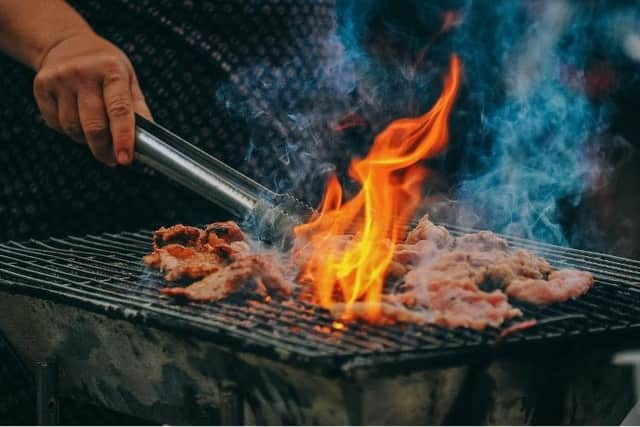Advice for Wigan BBQ lovers: These are the right temperatures to cook your meats to avoid food poisoning
This article contains affiliate links. We may earn a small commission on items purchased through this article, but that does not affect our editorial judgement.
and live on Freeview channel 276
Online healthy retailer MuscleFood.com is urging people to take extra care when cooking BBQ meats by paying attention to the temperatures needed to fully cook them.
The experts want to emphasise cooking meat on the BBQ isn't the same as frying on the hob or cooking in the oven and air fryer.
Advertisement
Hide AdAdvertisement
Hide AdThe warning comes as Brits up and down the country will be getting their friends and family around for a good old BBQ now the sun is shining.


But many get carried away with the festivities of the summer weather and don’t pay attention to their meats enough and will just presume a darker-coloured surface means the meat is cooked through.
Those who get carried away with the summer heat and hosting guests may presume a dark colour on the outside means their meat is cooked through, only to find they are completely uncooked once cut open.
Ashleigh Tosh at MuscleFood.com said: “As soon as the sun starts shining, it's hard to resist the temptation of tucking into a delicious BBQ.
Advertisement
Hide AdAdvertisement
Hide Ad“However, there's a potential danger that comes with cooking meats like beef burgers and pork on the BBQ, especially for those inexperienced with the cooking appliance.
“Burgers are one of the most popular meats to eat at a BBQ, in fact, a survey of our customers found 80% of Brits prefer burgers over the classic hot dogs.
“But burgers are also one of the easiest food items to get wrong if they’re not cooked at the right temperature.
“The last thing anyone wants is to have their head stuck in the toilet because they had the temperature lower than it should’ve been or they got carried away hosting and forgot to time their food properly.
Advertisement
Hide AdAdvertisement
Hide Ad“Always make sure to have a thermometer on hand to check the internal temperature of the meat and to cut through slightly to check for colouration.
“But also be cautious of overcooking the meat or it may end up being drier than the Sahara.”
These are the right temperatures to cook your meats to avoid food poisoning:
Beef burgers - 71ºC to 74ºC
One of the most popular choices for a BBQ - beef burgers are enjoyed best from medium rare to well done. But if they’re taken off the grill too early, don’t be surprised if they come back up the next day!
Advertisement
Hide AdAdvertisement
Hide AdHot dog sausages - 74ºC to 75ºC
Make sure they’re cooked evenly throughout, as sausages can appear to be cooked at the ends but may be pink in the middle. A raw hot dog can cause a nasty case of nausea and vomiting for a week.
Pork - 63ºC to 66ºC
It’s not just the appearance of pork that can distinguish whether it’s undercooked, but it’s also the texture. Even though it’s a fatty meat, a chewy texture is an indicator that it’s underdone, so keep monitoring the inner temperature.
Ribs - 93ºC to 97ºC
A little pink isn’t the end of the world, so don’t just rely on colouration for ribs. When cooked on the BBQ, ribs need to be cooked at a higher heat and should be left to grill for four to five hours.
Chicken burgers 74ºC to 76ºC
Unlike beef burgers, if there are any signs of pinkness in a chicken burger, get it back on the grill to avoid salmonella poisoning. Having it at the 74-76ºC mark helps to avoid any harmful bacteria from undercooked chicken.
Advertisement
Hide AdAdvertisement
Hide AdBeef brisket - 95ºC to 96ºC
Brisket usually takes longer to cook on the BBQ compared to other meats, but this doesn’t mean it needs to be whacked on the highest temperature. Keep it in the middle at roughly above 95ºC but be cautious of overcooking or it’ll taste dry and tough to eat.
Salmon - 90ºC to 92ºC
For those who prefer fish on the grill, Salmon needs to be cooked at the same temperature as some of the other meats on the list. Colouration is a key indicator of whether it’s fully cooked, if it’s dark pink in the middle it needs to be put back on the heat.